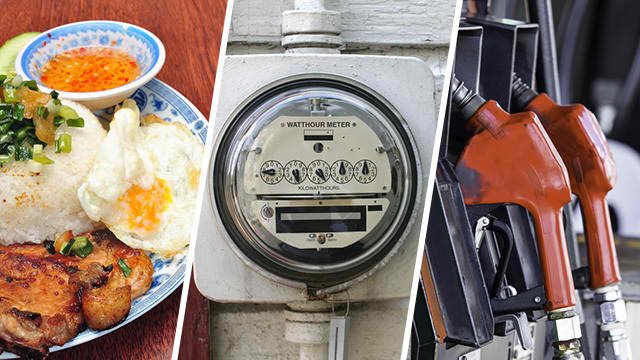SUMMARY
This is AI generated summarization, which may have errors. For context, always refer to the full article.

MANILA, Philippines – Prices of basic goods and services are likely to “manageably pick up in the coming months,” due to the normalization of oil prices in the world market, said the Department of Finance (DOF).
“In the foreseeable near-term, the general price increase may be above 2% as indicated by above 2% core inflation, [which is] an indicator of inflation outlook,” DOF Undersecretary Gil Beltran said in a statement on Sunday, January 8.
But for the rest of 2017, Beltran said the DOF expects the rate of increase in consumer prices to remain favorable after inflation dipped to its lowest level in almost 3 decades in 2016.
Inflation in December 2016 rose slightly to 2.6.% from 2.5% in November 2016.
December’s surge means that full-year inflation for 2016 settled at 1.8%, below the government’s target range of 2% to 4%, but higher than the 1.4% of 2015. (READ: Inflation settles at 1.8% for 2016)
Sufficient food production ‘crucial’
Beltran said ensuring sufficient food production through investments in infrastructure is important to keeping the country’s favorable inflation rate.
He added the government needs to ensure that credit and insurance coverage are available to agriculture stakeholders.
“The country’s inflation rate remains favorable; the average annual inflation rate of 1.8% for 2016 is the lowest in 29 years,” Beltran said in his report to Finance Secretary Carlos Dominguez III.
“Food production is crucial to maintaining this favorable macroeconomic scenario. Support to production through infrastructure development, credit availability, and insurance coverage is necessary to sustain this,” he added.
In the past two years, food contributed 1.1 percentage point to the inflation rate, while the share of non-food items doubled from 0.2 to 0.5 percentage point.
“For two consecutive years, the average inflation rate has fallen below 2%, largely on the back of lower fuel and energy prices,” Beltran said. “Stable rice prices also muted inflationary pressures.”
Price expectations
Last December, the general price increase for food and non-alcoholic drinks further rose to 3.6% from 3.3%, contributing 1.1 percentage point to inflation.
Vegetable prices accelerated by 11.5%, while the cost of rice increased 1.6%.
But year-on-year, rice inflation fell 0.3 percentage point. (READ: BSP maintains monetary policy, inflation targets)
“Rice inflation has dropped due to production recovery and timely importation,” Beltran said.
“Programs to enhance vegetable farming are needed to temper the double-digit inflation in this sector which has continued for more than a year now,” he added.
Last month, the rate per kilowatt hour (kWh) of the Manila Electric Company (Meralco) for an average of 300 kilowatts-per-month consumption slightly increased to P8.70 from P8.60 in November, but still lower than P8.90 a year ago.
Meralco’s generation rate per kWh also increased to P3.90 in December from P3.80 in November, but still below P4.10 in 2015.
Also, the average price of diesel in Metro Manila among the “big 3” oil companies jumped to P29.10 per liter from P27.30 in the previous month, which is also higher than the P23.90 registered in the same month in the previous year.
The average price of gasoline during December also increased to P44.80 per liter from P42.70 in November and P41 a year before. – Rappler.com
Add a comment
How does this make you feel?
There are no comments yet. Add your comment to start the conversation.